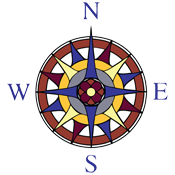Creating and Curating a Personal, Digital Portfolio **Online**
Description:
Digital portfolios. A necessity in the visual, performing, and language arts worlds. Every writer, artist, musician, actor, dancer, game designer, engineer, or any other type of creator, whether performance- or project-based—needs to present a “body of work”. For professionals, a portfolio can seal the job offer. For students, it is a standard for colleges, internships, scholarships, companies, and agencies. Visual and performing arts students need a digital portfolio for applications to art, dance, music, theatre schools, and for auditions. For other creators and designers, a digital portfolio is an opportunity to expand a resume or transcript, providing depth by “showing the work”, not just telling about it. Portfolios put the creator in the role of “curator,” forcing critical analysis by assessing specific works to include and how best to present them. Portfolios also provide familiar talking points for interviews. Pulling up a portfolio and showing photos or videos of a project or product is easier (and more effective) than trying to describe it, especially if it’s complex.
In this course, students will build a digital portfolio that provides both formative and summative assessment of work completed and development of process. Each student will create and curate a collection of product-based works (writing, art, photography, design) or project-based works (engineering, research & development, computer science), or performance-based works (theatrical, dance, musical).
Students will begin by researching and analyzing professional portfolios as “role models” for both design inspiration and insight into how a career in this field unfolds. After seeing possibilities, students will design and develop a homepage focused on who they are as a creator or performer, introducing themselves, their work, and their goals. They will create a template, layout, and palette for their portfolio that sets a tone and reinforces messaging. Writing and graphics will be integrated in the opening section (homepage) and throughout the portfolio (content pages).
Next steps focus on content planning: selecting what media, subjects, genres, forms, and accomplishments to include in a gallery of work. Some pieces may already be completed. Some may still be in development, and students may work in partnerships to finish them. Classes will be devoted to teacher and peer review, breaking into interest groups (writers, digital artists, dancers, etc.) to initiate targeted feedback. Creators have deep and specialized knowledge of subject, technique, materials, vocabulary, etc., so field-specific collaboration is invaluable.
Then, curation begins. Arranging works and annotating them. Students will create categories that translate into menu items and sections. They will combine photos, video, graphics, and annotative text to tell the “story” of who they are and what they have created. Portfolio sections will include openings and introductions showcasing original works with clickable icons that lead an audience to a deeper view of their work. Works will be titled, captioned, and cited with form, media used, date, place, etc. to provide a museum-style approach to curation. At a glance, a visitor will see not only what the student has created, but also can get to know the creator through his/her personal design and content choices. Students may opt to show both process (chronicling the creation of a work, writing, or project) and finished product. Concepts and in-development pieces may also be included to underscore creativity, passion, and initiative. Most creators have works in progress and ideas for what’s next.
The end product of all this is, simply, a link that, with one click, opens a portal to the world of a creator’s process, expertise, discoveries, and, of course, best works.
Note: Weekly class meetings will be a blend of lecture, presentations (instructor and student), discussion, writing, editing, and peer/teacher review. All class meetings will be in a Google Meet virtual classroom, providing synchronous online instruction via videoconferencing, screen-sharing capability, and breakout rooms for group work.
Workload: Students should expect to spend 2+ hours per week outside of class. (Varies by personal goals and body of work.)
Assignments: All assignments, class materials, and shared documents will be posted on a password-protected Google Classroom site.
Assessments: Informal, qualitative feedback will be given in class throughout the semester by the instructor and peers. A quantitative score/grade will not be provided.
Class Materials: Students must have an “body of work” with completed and in-progress pieces representing original writing, art, photography, inventions, theatrical roles, costumes, singing, concerts, etc. Students should also have a laptop with camera, microphone, and internet connection for class meetings and a cell phone or digital camera for scanning or photographing works. Finally, students will need to select a web-based portfolio template such as a no cost Weebly platform (upgrades available at an additional cost.)
Credit: Homeschool families may wish to count this course as a component (partial) credit in Language Arts or Visual Arts for purposes of a high school transcript.
We are sorry but registration for this event is now closed.
Please contact us if you would like to know if spaces are still available.

